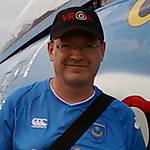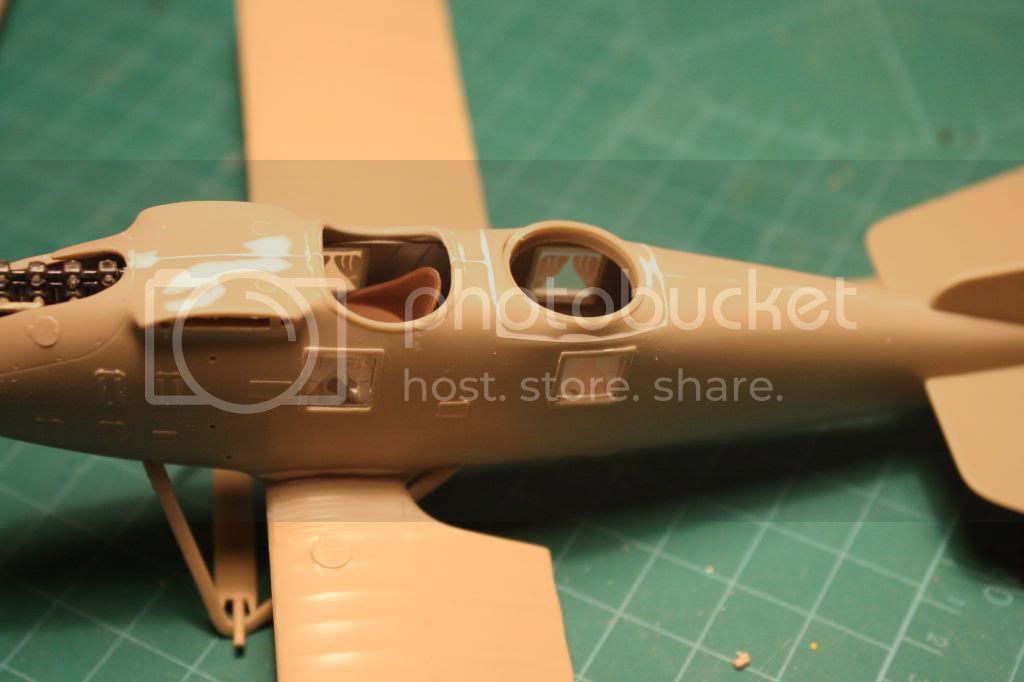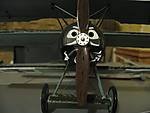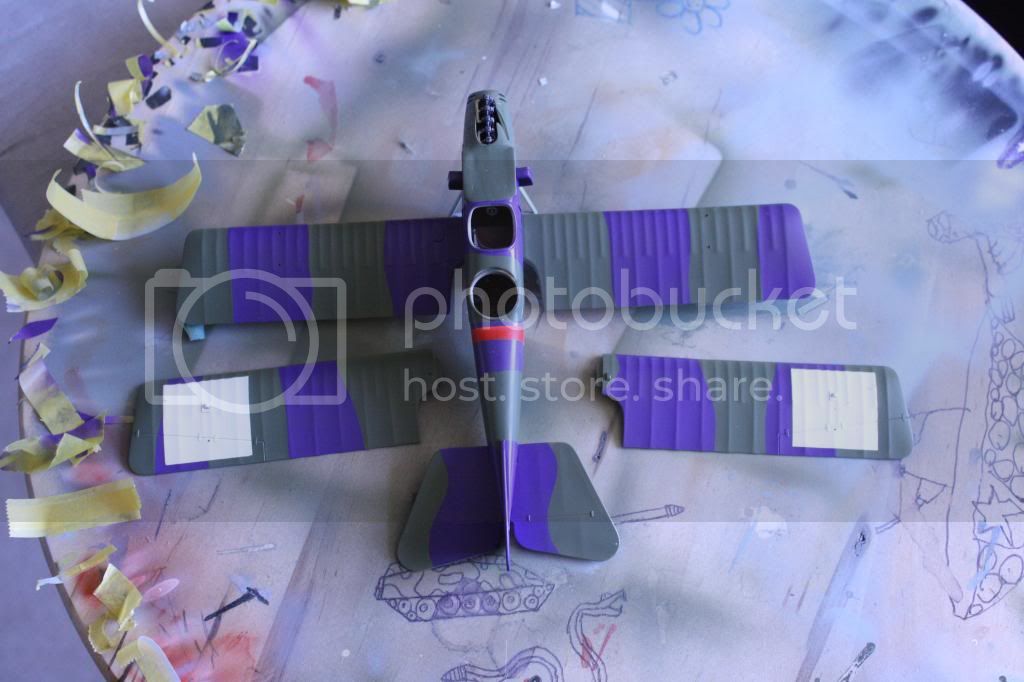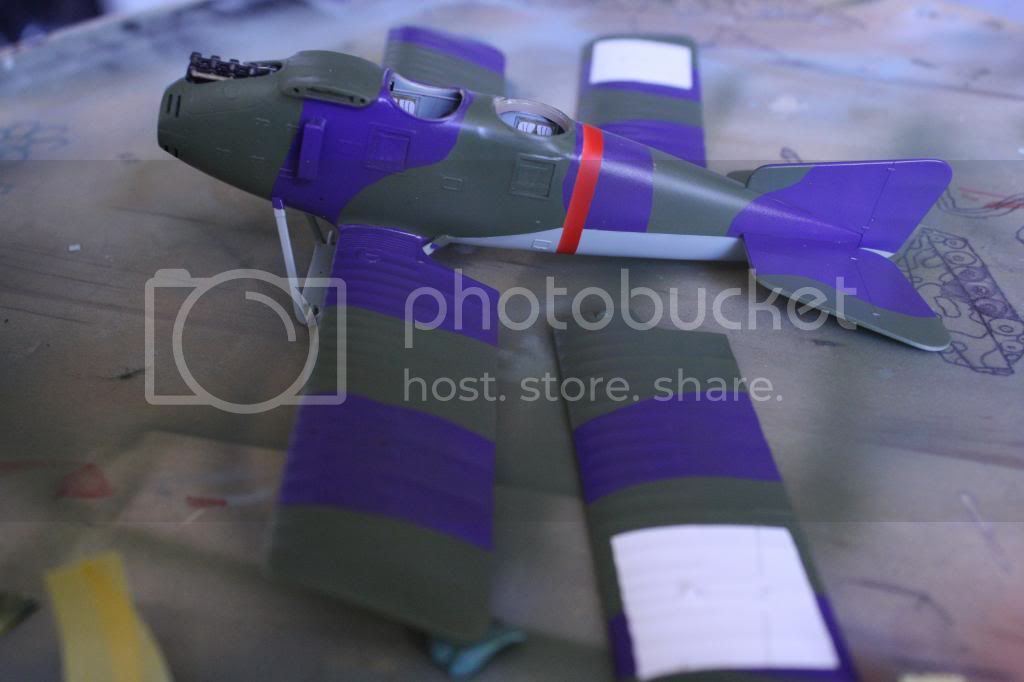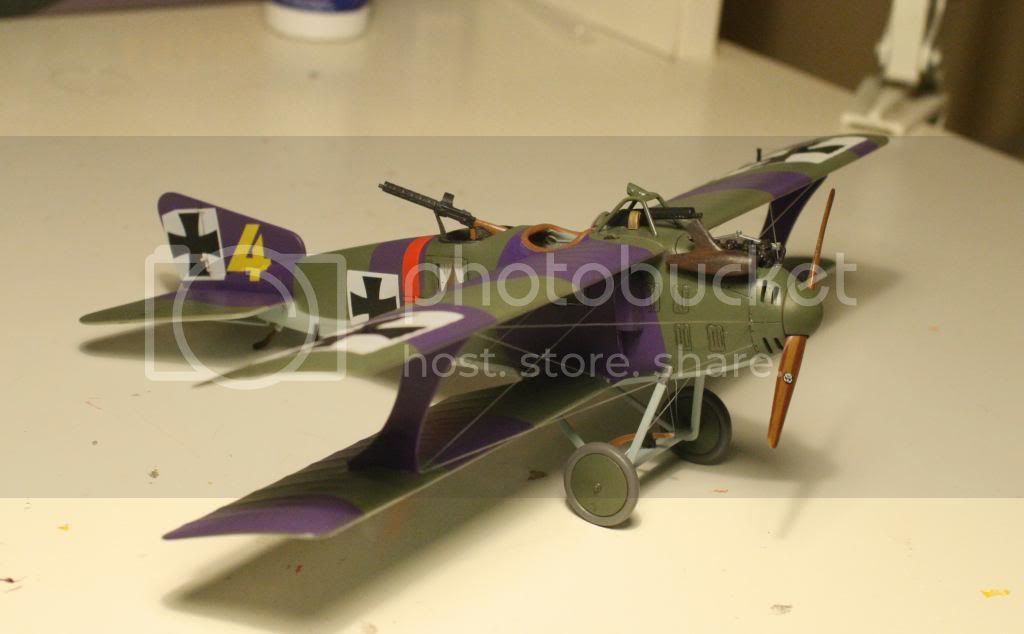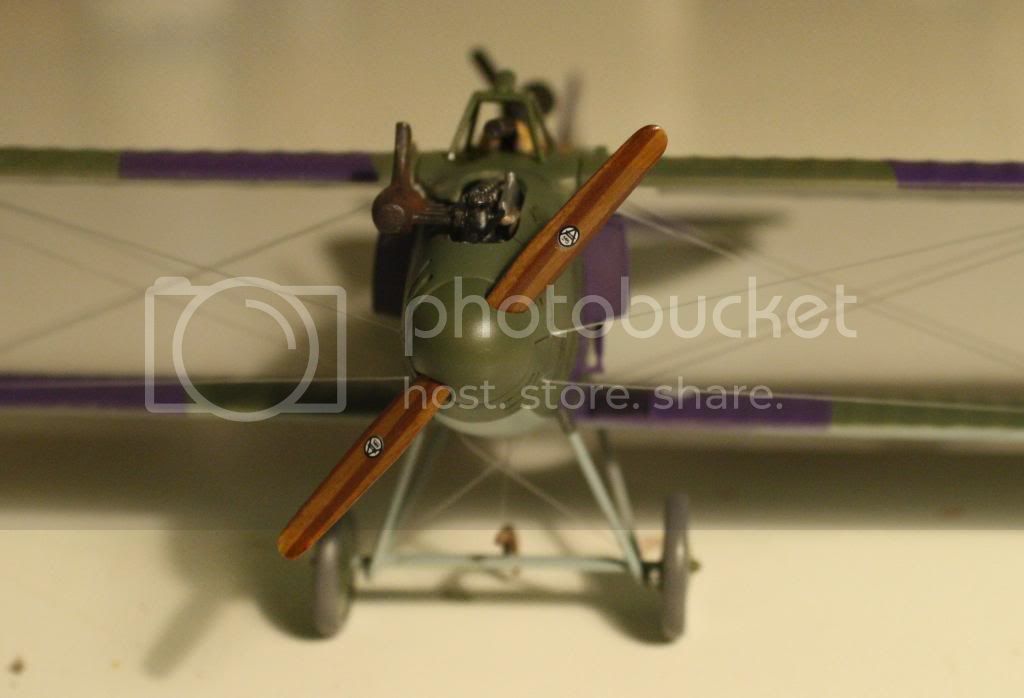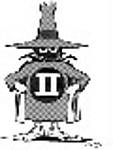
I base coated the ‘wooden bits’ in Tamiya XF59 Desert Yellow.

When this was dry, I brushed on some Burnt Umber oil paint and continued to work it in straight lines with a wide brush until I had the desired effect. I thought it turned out OK for my first attempt but could do with some refining next time I try it. There is a tutorial for this on the Wingnut Wings site.

All the detail bits were painted and attached to their various locations.

I used the included decals for the instrument panel, the one on the left as you look at it being a bit oversized.

The finished item looks OK though, and will be buried quite deep in the cockpit so won’t be too visible.
The Mercedes D III engine was assembled and painted,

then it was time to get the fuselage halves together. The internal structure was lined up in one of the halves and cemented in place. There is a helpful diagram in the instructions to assist with this.

The engine was popped in and the two halves were glued together. After doing this, I noticed a gap between the internal bulkheads and the side walls so I clamped the mid section of the fuselage to close this up, cemented in the rear gunners ring mount and am now waiting for the glue to dry.

I must admit that I am thoroughly enjoying my first foray into early aviation and hopefully will be cracking on with this build in the days to come.




